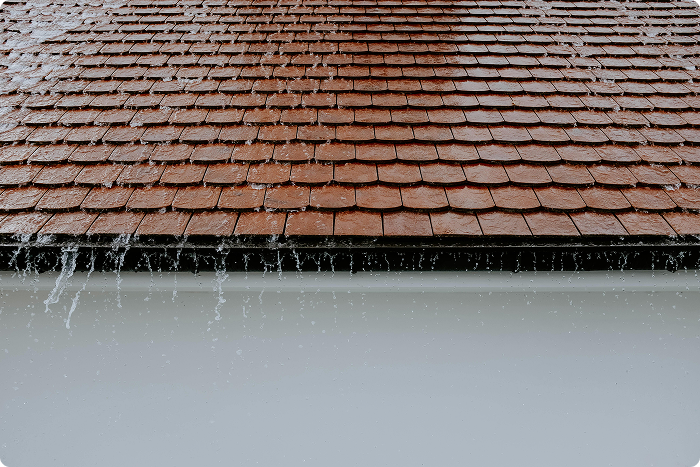Don't Let a Roof Leak Wreck Your Home-Here's How to Fix It!
By Jake Wallace · Jul 25, 2025

Roof leaks, ceiling stains, and water damage are nightmares for any homeowner. These issues can stem from various sources, including damaged shingles, faulty flashing, or improper sealing. Neglecting these seemingly small problems can lead to more significant structural issues and costly repairs. Understanding the root causes and taking proactive steps can save you time, money, and stress in the long run. This comprehensive guide will help you diagnose common roof problems and provide you with effective solutions. By the end of this article, you'll be well-equipped to address these issues, or know when it's time to call in the professionals.
Common Causes of Roof Leaks and Water Damage
Damaged Shingles
Shingles serve as the outermost barrier against the elements. Over time, they can become damaged due to weather conditions, age, or poor maintenance.
Identifying Damaged Shingles
Look for shingles that are cracked, curled, or missing granules. Moss and algae growth can also indicate that shingles are retaining moisture, leading to potential leaks.
Addressing Shingle Damage
Replacing damaged shingles promptly is crucial to preventing roof leaks and water damage. Regular inspections and maintenance can help you spot these issues early.
Flashing Issues
Flashing is used to seal joints and redirect water away from critical areas such as chimneys, vents, and skylights. When flashing deteriorates, it can lead to significant leaks.
Types of Flashing
There are several types of flashing, including step flashing, chimney flashing, and valley flashing. Each type serves a specific purpose and requires proper installation to be effective.
Fixing Flashing Problems
Inspect your flashing for signs of deterioration, such as cracks or rust. If you notice any issues, replace the damaged flashing to ensure a watertight seal.
Improper Sealing
Inadequate sealing around roof penetrations can allow water to seep into your home, causing ceiling stains and structural damage.
Common Areas for Improper Sealing
Check areas around chimneys, vents, and skylights, as these are common spots for sealing issues. Poor sealing can result from improper installation or aging materials.
Improving Sealing Solutions
Use high-quality sealants and ensure proper installation to prevent leaks. Regularly inspect these areas and re-seal as necessary to maintain a tight seal.
Diagnosing Roof Leaks
Signs of Roof Leaks
Identifying roof leaks early can save you from costly repairs down the road. Here are some signs to watch for:
- Ceiling Stains: Discolored patches on your ceiling indicate water intrusion. These stains often start small but can spread over time.
- Water Drips: Active leaks during rainstorms are a clear indication of roofing issues.
- Musty Odors: Mold and mildew growth due to moisture can cause unpleasant smells.
Using Professional Tools
Infrared cameras and moisture meters can help detect leaks that aren't visible to the naked eye. Consider hiring a professional for a thorough inspection if you suspect hidden leaks.
Preventing Water Damage
Regular Inspections
Conducting regular roof inspections can help you catch and address minor issues before they escalate. Aim for at least two inspections per year, ideally in the spring and fall.
Gutter Maintenance
Proper gutter maintenance is essential for directing water away from your roof. Clean your gutters regularly to prevent clogs and ensure smooth water flow.
Adequate Ventilation
Ensure that your attic is well-ventilated to prevent moisture buildup, which can lead to mold growth and water damage. Proper ventilation also extends the life of your roofing materials.
Addressing Ceiling Stains
Identifying the Source
Before you can address ceiling stains, you need to identify the source of the leak. Follow the trail of water back to its origin on the roof.
Repairing Ceiling Damage
Once the leak is fixed, you can address the ceiling damage. Remove damaged drywall, treat mold or mildew, and repaint the area to restore its appearance.
When to Call a Professional
Major Structural Issues
If you notice significant structural problems, such as sagging ridges or extensive water damage, it's time to call in a professional. These issues often require specialized skills and equipment to address.
Persistent Leaks
If you have persistent leaks that you can't resolve, seeking professional help is advisable. A roofing expert can provide a thorough inspection and recommend effective solutions.
Extensive Roof Damage
For widespread roof damage, such as multiple damaged shingles or extensive flashing issues, professional assistance is essential to ensure a proper fix and maintain your roof's integrity.
Conclusion
Dealing with roof leaks, ceiling stains, and water damage can be challenging, but understanding the causes and taking proactive steps can make a significant difference. Regular inspections, timely repairs, and proper maintenance are key to preventing and addressing these issues. If you need personalized advice or professional help, consider using HouzTask AI to get your questions answered and find the best roofing experts.
Need help?
Let HouzTask help you diagnose the issue or connect with a trusted local pro — in minutes.
Get Started with HouzTask